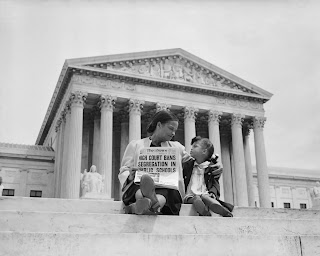The question regarding the worth of a human life is a complex concept to understand, especially when it is linked to the debate whether that being is actually considered a person or a piece of property. In the State Vs. Mann case, a rented slave, Elizabeth Jones, was shot by John Mann in an escape attempt from a punishment. She was injured, but walked away alive and Mann was charged with assault and battery with a fine of five dollars.
It is no lie that what Mann did was an outburst of violence, yet even with this defense, Mann's actions were valid in this situation. This belief is based off of the customs, norms, and traditions at the time this took place.
For example, slaves were not allowed be be away from their owners without permission, they were not allowed to assemble without consent, they were not allowed to use or bear firearms, or even learn to read or write.
The way these basic human freedoms were taken away from the slaves really show how little control over their lives they had and how much their rights and freedoms were handed over to their owners or any white person they were associated with.
In this case, even though Mann did not own Jones, he was still able to exercise those forms of control over Jones because of what he knew as what is right based on the customs and norms at that time.
More of these social norms included the punishment of slaves for misbehaving which leads to the shared belief that slavery was meant to be dehumanizing.
These traditions of punishments could take the forms of whipping or branding. Death was another form of punishment, which was acceptable in cases where the slaves commit extreme acts of violence towards white people. This goes to show how much more valued white lives were at this time based on the fact that a person of color could get the death penalty just for being violent towards a white person.
In this case, Elizabeth Jones disobeyed Mann, by trying to escape a punishment, which had to have used some sort of violence to get out of the situation she was in.
Some more norms that were agreed upon were that slaves were considered property. This means they were not considered human beings, so this whole debate is about a piece of property being shot, which is unfair for Mann to be getting charged criminally for this.
For example, the slaves were forced to live in shacks and sleep on the floor, got very little food, showing how they really are not treated like human beings at all.
A norm came to play when the white slave owners started to exercise more control over their slaves due to the slave revolts grew larger.
An example of one these many slave revolts was the Nat Turner Rebellion, which was a slave rebellion which took place in Southhampton VA, lead by Nat Turner, which caused the social norms, customs, and traditions all to change.
The slave codes became much stricter after this incident, which was why Mann saw it okay to shoot Jones. Additional restrictions were placed on the slaves after this event, which caused the norms to involve harsher punishments on them. These customs were not only placed on enslaved African Americans, but also freed slaves.
The last social custom of the time was the hierarchal system in the State of North Carolina. This consisted of six social classes. The sixth, and lowest were the enslaved people. They were below everyone else in society. In this case, Mann was on a higher level than Jones, which gives him the right to punish her in whichever way he desired.
Based off of all these reasons, why would we take the side of a slave, who was not even considered a real human being when all of the norms, traditions, and customs prove that Mann's actions in killing Lydia were justified.






No comments:
Post a Comment